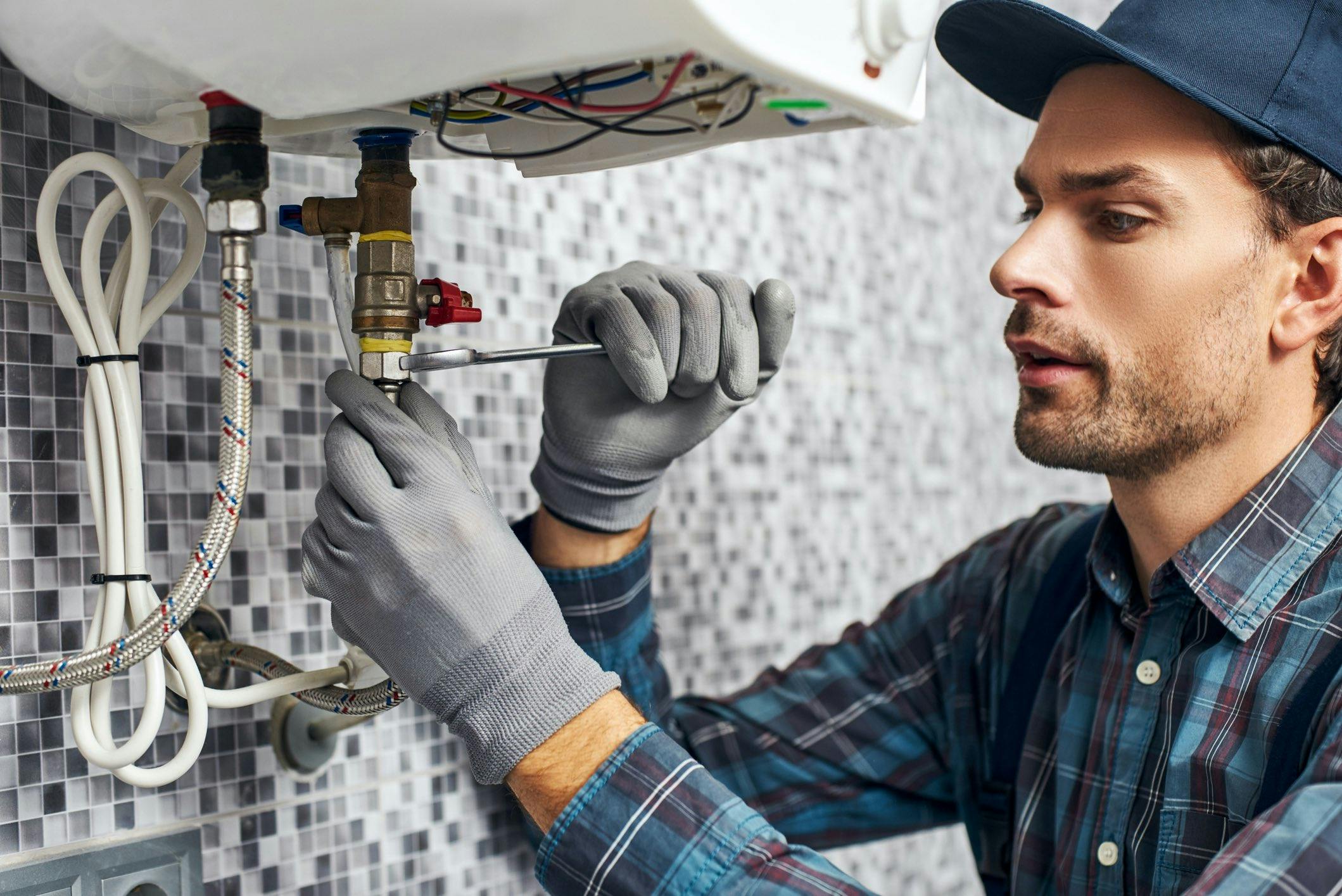How To Create a Plumbing Invoice Template

If you’ve started a plumbing business, you have great timing. According to IbisWorld, the number of plumbing businesses has grown 2% year over year since 2017. Many trades are short on contractors as the workforce ages out, so it’s a great time to fill that need with services for your local area. Plumbing allows you to run a business that stays small or grows with you, and to keep a flexible schedule or earn more for urgent repairs.
Now you need to invoice clients and keep track of payments. Good news: invoicing for plumbing is pretty easy. All you need is the following to get started.
How To Create a Plumbing Invoice
If you want to create your own plumbing invoice, it’s a good idea to start with a template you can reuse with new client and job details for each job. That will save you time on recreating an invoice every time you send a bill. To create a plumbing invoice, you can use a word processor program such as Microsoft Word or Mac’s Pages, or download a template already formatted online. To create your own template in a word processing program, look under the templates menu, which pops up when you open a new file to allow you to start with a formatted document instead of build from scratch. Then, fill that or a custom plumbing template (below) with the following details.
- Contractor Name/Logo
- Client Name
- Client Contact Person Name (attn: Name)
- Client Address
- Date of Billing
- Project Name
- Details on project contents
- Total of each service/product and Total Payment Due
- Contractor Contact Information
- Types of Payment accepted
- Late Fees or Payment Processing Fees assessed
You’ll also need the client contact information in order to send the bill by mail or email or in an online invoicing app. You can include this in the invoice if it’s easier for you to keep track of where it was sent. Some invoicing systems keep track of your client list and contact info, other times you will need to keep your clients’ contact info handy in a CRM or other contact management system to remember where to send invoices. More on that in a minute.
If you’re sending an invoice to a company, be sure you have a contact person and their correct contact info to send your bill so it goes to the right place to get paid. If you’re sending an invoice to a residential customer, be sure to have accurate information on their name, address, and email or phone number.
How To Itemize Your Bids and Invoices
Some plumbing businesses itemize their bids and invoices so clients can see what they’re paying for. If you have a complex plumbing job such as a bathroom renovation or major home repair, it might be enough to list out the total cost of each portion of the project.
As an alternative, you could list the total cost of materials plus labor and any sales tax on materials. This would work well for you if you take on a lot of plumbing jobs that involve changing out plumbing fixtures, and clients need to pay for you to go purchase the materials and pay for the level and style of fixture they want.
Plumbing Invoice Template Samples
If you’d like a little more formatting to your invoices, you can use an easy plumbing business invoice template online and fill it out with the information above.
Be sure to save a general template that keeps your company information and logo and the sections we listed here. You can fill out a new invoice every time you complete a job with the details that will change for each job. Then, be sure to save each invoice or use an invoicing service that records the invoices you sent, such as Yottled. If you’re going to use an invoicing service or online payment processing, research the extra fees first and include them in your invoice total. If you use Yottled, you can easily track when payments are received, and keep your client contacts all in one place.